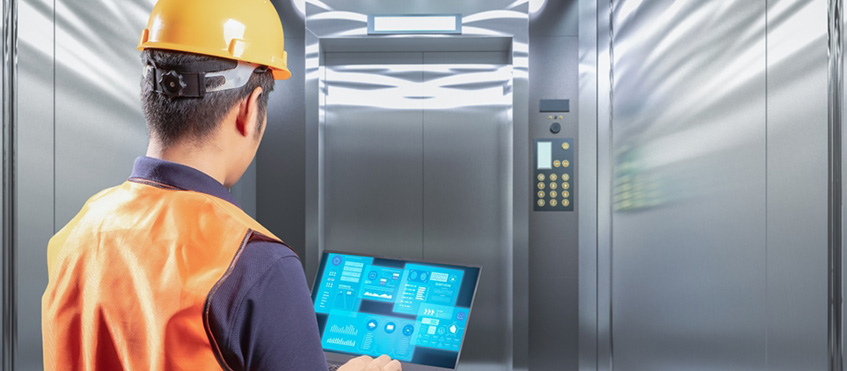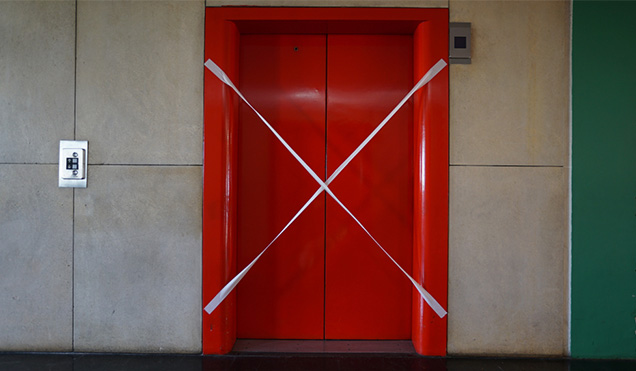
14 Oct MicroAI AtomML Reduces Elevator Maintenance Down Time
Like every industrial sector, elevator manufacturers are looking for ways to fully optimize the performance, productivity, and operating costs of their machines. A common objective within the elevator industry is to utilize Industry 4.0 technologies and solutions to evolve from a reactive or preventive maintenance state to a predictive state powered by AI-enabled devices and sensors.
The Problem – Predictive Elevator Door Maintenance
Elevator door components are under constant wear due to their continuous movement. It is estimated that 60 to 70 percent of elevator downtimes are due to maintenance on those components. Wide variances in usage rates, age of components, and environmental conditions all combine to create service call rates that are unpredictable and inefficient. This creates a cascade of problems, including:
- Inefficient Use of Resources: Maintenance resources are not optimized and are often dispatched either too early or too late.
- Client Disruption: Prolonged elevator downtimes create traffic congestion and put additional pressure on other elevators.
- High Maintenance Costs: The lack of AI-enabled predictive analytics inhibits the ability to perform maintenance when it is actually needed (or before actual failure).
- Reduced Component Lifespans: Legacy—reactive—maintenance routines are often performed too late to extend the life of expensive elevator door components.
Elevator manufacturers need a solution that provides the predictive intelligence necessary to provide deeper observability into the real time conditions and health of elevator door components. These new capabilities would provide predictive insights that would power maintenance routines that are more productive and less disruptive.

The Solution – MicroAI AtomML
MicroAI AtomML™ is uniquely positioned to solve elevator door maintenance challenges. AtomML is an embedded, self-correcting, semi-supervised learning engine that aggregates data from device and machine sensors to create a behavioral profile of the asset and then actively monitors for abnormal performance and potential malfunctions.
For elevator manufacturers, AtomML enables transition to a predictive maintenance state via deployment of an intelligent ecosystem that includes:
- AI-enabled sensor nodes attached to specific locations within the elevator to provide deeper visibility into the health of critical components. These sensors provide OEM’s and associated maintenance staff with a continues flow of real-time data, including:
- Door open and close rates
- Door vibration levels
- Sounds generated by door opening and closing
- Verification of full opening and closing
Each of the above parameters are actively compared to the normal behavior profiles established by AtomML.
- Wireless communication of sensor data to an internet-connected router that provides instantaneous ingestion and analysis.
- Real-time visualization that provides continuous, at-a-glance, insights into the performance and health of critical door components.
- Predictive analytics that deliver predictive insights into future problems and mitigations. Analytics that power a transition to elevator door predictive maintenance.
The Impact
MicroAI AtomML has provided elevator manufacturers with the technology to mitigate the problems associated with legacy door maintenance processes. The following is a simple breakdown of the advantages of predictive door maintenance.
|
|
Preventive/Reactive |
Predictive |
| Component Observability | Non-existent or based on manual processes | AI-enabled, self-learning, personalized, deep observability |
| Door Reliability/Uptime | Doors often disabled for prolonged periods due to unplanned and/or unnecessary maintenance | Elevator downtimes are reduced by up to 60% |
| Maintenance Efficiency | Static maintenance protocols that are not tied to real-time conditions of the asset | Dynamic maintenance supported by predictive analytics that generate service calls prior to breakdown |
| Operating Costs | Costs are negatively impacted by maintenance processes that are not AI-enabled | Significant cost savings are realized via full optimization and efficacy of maintenance routines |
| Client Satisfaction | Excessive and unpredictable downtimes create traffic congestion, restricted building access, and low levels of client satisfaction | Maintenance is performed prior to failure, unproductive service calls are minimized, and clients have a more dependable elevator experience |

